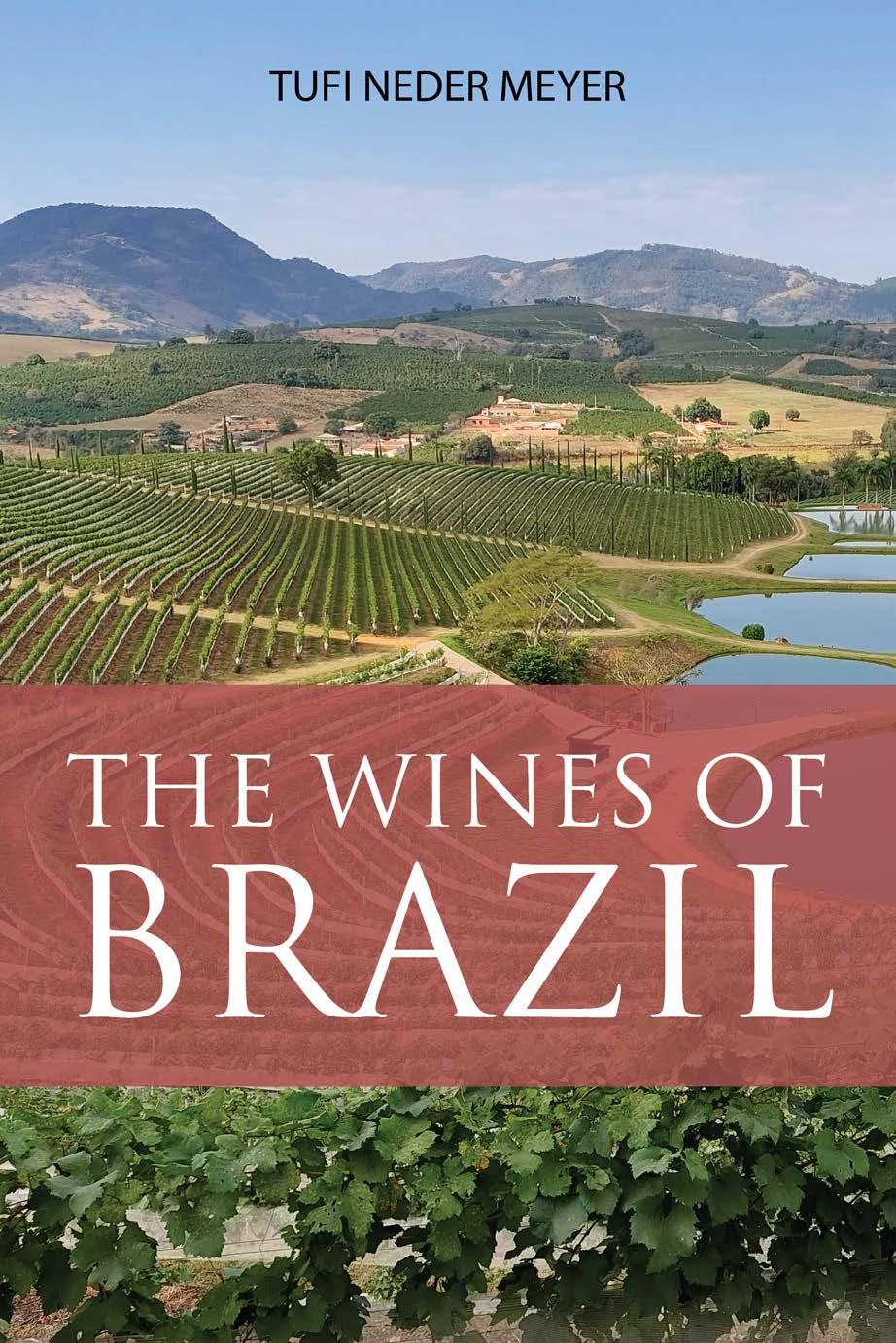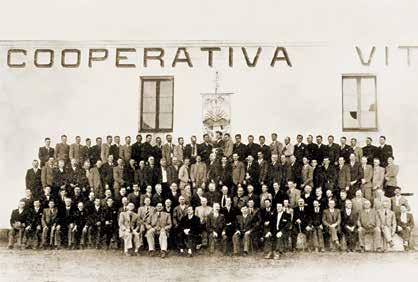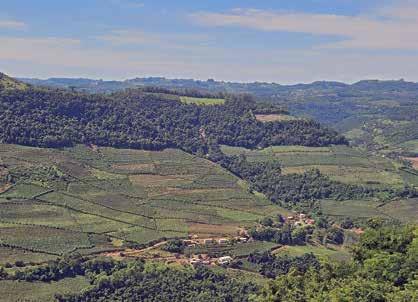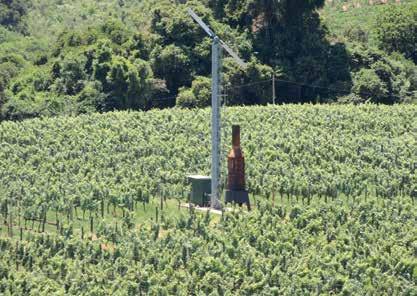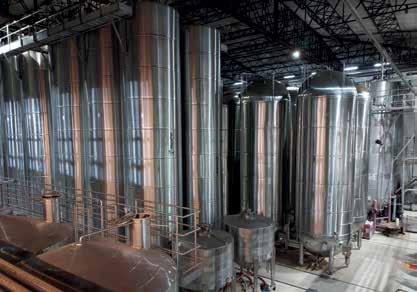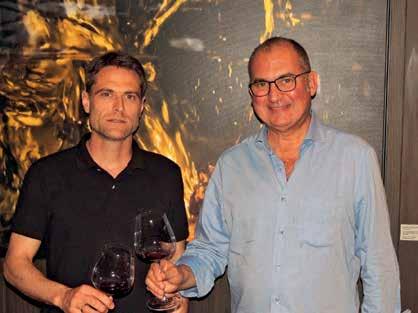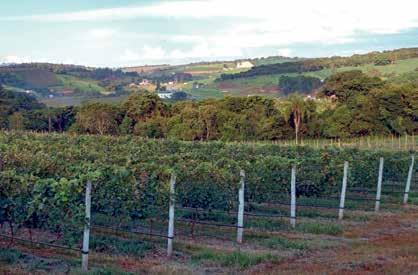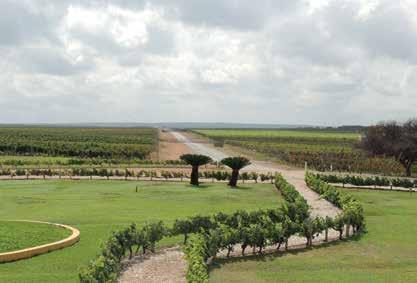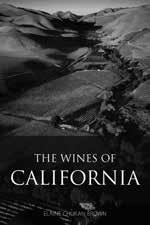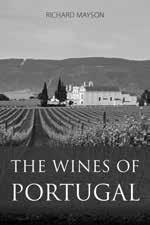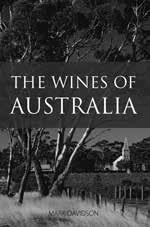8 RIO GRANDE DO SUL: SERRA GAÚCHA
‘The Great River of the South’, the southernmost state in Brazil, measures 281,707 square kilometres and has a population of 10.88 million (as of 2022). The human development index (HDI) was 0.787 in 2017 (versus 0.759 for Brazil as a whole). The demonym here is gaúcho, derived from longlasting traditions of riding, cattle raising and openair work. This is the land, par excellence, of barbecue: churrasco. If you travel through Brazil – and even abroad – almost all steak houses, or churrascarias, are managed by gaúchos. People are traditionalists, not only in their folkloric dances and music but also in their eating and drinking preferences. Everywhere you will find, in all weathers, people sipping
The South region
The South region encompasses the states of Paraná, Santa Catarina and Rio Grande do Sul. Due to latitude and altitude, temperatures are generally cooler than in other states, favouring viticulture. DPWH is seldom practised, or even not feasible in most parts, nor is the South a region of tropical viticulture – this is traditional, with the usual growth cycle. There is a strong European influence (especially Italian and German, but also Polish, Ukrainian, Dutch and, of course, Portuguese). This reflects on customs, cuisine, culture, and wine production and consumption. No wonder Brazil’s most significant share of wine production comes from here. All three states are agricultural powerhouses with an essential livestock business. They also have important industries. The South region is the wealthiest and most highly developed area of Brazil.
Map 8: Location, IPs and DOs of Serra Gaúcha (modified and translated from Embrapa)
is high, fungal diseases are always a threat, requiring constant attention; the most common are downy mildew and cluster rots.
Serra Gaúcha, as the name implies, is a hilly region. It is beautiful to see: the vineyards are surrounded by extensive native woods with many Brazilian pine trees (Araucaria angustifolia). Everything is green wherever you look.
The prevailing soils are naturally fertile, with medium to high organic content. Aluminium and organic matter contents range from moderate to high. The soil is acidic, demanding correction. Clay is a very important textural characteristic: over 90 per cent of cultivated soils have a 21 to 60 per cent clay content. The two most frequent SiBCS soil orders are argissolos and neossolos. As the region’s relief is mountainous (and both orders are more frequent in this type of relief), and due to plentiful rain, erosion is an important concern. The relief also prohibits overt mechanization. Manual harvesting predominates and manpower from outside the area is frequently needed. These facts impact the cost of the wines.
Bento Gonçalves
Monte Belo do Sul
Garibaldi
Pinto Bandeira
Nova Pádua
Flores da Cunha
Caxias do Sul
IP Altos Montes
DO and IP Pinto Bandeira
IP Vale dos Vinhedos
DO Vale dos Vinhedos
IP Monte Belo
N 010 km
IP Farroupilha
RIO GRANDE DO SUL
Caxias do Sul
Planted areas and grape varieties
Just as I began writing this section, the SIVIBE – Sistema de Informações de Vinhos e Bebidas (Information System on the Wine and Drinks Area) – became accessible online. As it includes information on planted areas detailed by variety, I could retrieve updated data (2022) for Serra Gaúcha (and elsewhere). Isabel and other American hybrids continue to dominate the region, delivering large volumes of inexpensive wine to all Brazilian states and also exported, mainly to Paraguay. This book, however, focuses on vinhos finos (made from vinifera) , although I include some Embrapa creations, especially Lorena, Moscato Embrapa and (despite the tiny planted area) Bibiana, as their quality compares well with European grapes. However, Brazilian laws mandate that their wines be labelled as vinho de mesa .
According to SIVIBE and excluding labrusca and similar, the most planted varieties (more than 100 hectares each) at Serra Gaúcha, in 2022, were: Chardonnay (496 hectares), BRS Lorena (448), Moscato Branco (444), Merlot (382), Moscato Embrapa (358), Cabernet Sauvignon (311), Glera/Prosecco (305), Malvasias de Cândia and Bianca (229), Trebbianos (225), Riesling Itálico (217), Pinot Noir
Vale Aurora’s vineyards, as seen from the Estrelas do Brasil winery
Wind turbine with an integrated heating system at Geisse
of the same two varieties, with a 36 month autolysis, has 5 grams per litre of sugar and undergoes malolactic fermentation. It offers a very clear autolytic character, while still retaining elegance and freshness. Extra Brut Rosé (Pinot Noir, direct press, 20 per cent barrel fermented, up to three months in used barrels) is pale pink, savoury and well structured, again a gastronomic treat – an excellent wine. Geisse Terroir Nature (again 20 per cent barrel fermented, 48 month autolysis, 52 per cent Pinot Noir) is made only in selected vintages; it brings strong brioche and patisserie aromas and flavours, being very textural and well structured; so complex, long and satisfactory. Terroir Rosé (Pinot Noir, direct press) is 100 per cent barrel fermented, staying for six months in the barriques. It is very complex, layered, well structured and lengthy. These Terroir products from single parcels are, indeed, exceptional wines and tasting them a great hedonistic experience.
Vinícola Valmarino
Pinto Bandeira �� valmarino.com.br/
Although vineyards were planted in 1978, this familiar winery was founded in 1997 by the oenologist Orval Salton. Sadly, he passed away
a year later, and his sons, Marco, Guilherme and Rodrigo, took over. They make 250,000 litres of wine annually (including baginbox) from their grapes (21 hectares and 18 varieties) and bought fruit. Cabernet Franc is important for them; it was the first vinifera grape they planted. Pay close attention to their products made from this variety. Visitors can have a guided tasting, a guided tour with tasting (reservation required), or just sit in their openair space (an astounding view!) and ask for wines and small platters (seven days a week).
Marco Salton, MSc, Valmarino’s oenologist, took me on a Sunday afternoon to tour the winery and taste some of their many wines. Malvasia (legally a varietal; it has 15 per cent Chardonnay) is very concentrated in the mouth: white flowers, lychee, textural, but keeping freshness. Shiraz (grapes from their Pinto Bandeira vineyards) is deep ruby, ripe and savoury, with notes of blackberry, olives and smoke, besides vanilla and toast from 16 months in American oak barrels. Cabernet Franc Ano XXVI is so ripe but fresh, showing notes of raspberry, slight capsicum, vanilla and caramel. V3 Corte 1 (50 per cent Sangiovese, plus equal parts of Cabernet Sauvignon and Merlot) is a full, concentrated, wellstructured wine with complex flavours, including sour cherry, cassis and chocolate; it is fresh and long. Reserva de Família, a blend of seven varieties, is a big wine with everything in full: concentration of ripe fruit, oakiness, alcohol and tannic structure. It is spicy and very long, demanding more time in the bottle. Marco informed me that they usually harvest grapes to craft base wines a little riper (16 degrees Babo, or 18.8 Brix) than the usual 17.6 Brix. He aims to have riper, more structured base wines without excessive acidity. All their sparkler labels give the dégorgement date. Valmarino Rosé Brut (12month autolysis, 8 grams per litre sugar) is made from equal parts of Sangiovese and Pinot Noir; with an onionskin colour, it is very perfumed and ripe. Tradicional Brut (Chardonnay, Pinot Noir) is pale, crisp, complex, elegant and a real bargain. Blanc de Blancs Brut is so light, crisp, clean and elegant; after a 22month autolysis, bread and brioche are present. Blanc de Noirs Brut (22month, 8 grams per litre residual sugar) has more weight, structure and body, besides some tannic grip; it is a very gastronomic wine. Rosa Maria Rosé Brut has a beautiful pink colour; the base wine is made from the direct pressing of grapes harvested at 20 Brix. This shows up as ripe red fruit, a clear tannic grip and a fuller body. Sur Lie Nature, currently with 50month autolysis, is hazy and complex, with so much bread dough and brioche, savoury, textural and long, with
beautiful thematic park and a strong focus on oenotourism. Besides a wine museum, they also carefully maintain the Vinhedo do Mundo (World Vineyard), which started in 2005. This is a live ampelographic collection of 400 planted grape varieties from 35 countries. Several different types of tastings (including blind) are available, as well as picnics, a garden experience, or tasting by the fireside during winter (it can be chilly here). They are open seven days a week (booking advised).
Privatum Trebbiano Toscano is a good example of how the judicious use of oak can benefit a neutral variety. After six months in French oak, the wine gains colour and flavours of vanilla, spice, nuts and some savouriness, keeping a citric, crisp acidity.
Cabernet Franc shows ripe raspberry and plums, capsicum and pencil shavings; it is fresh, youthful and varietally true. Privatum Ancellotta showcases ripe blackberries and plums, hints of earth, good acidity and soft, caressing tannins; it is rich, juicy and food friendly. Privatum Touriga Nacional is a rare example of unoaked wine from this noble variety; ripe black fruit, violets and hints of mandarin and earth reveal themselves easily. Its highquality tannins are very fine and elegant, as is the wine. 45 Anos, a blend of Marselan, Petit Verdot and Alicante Bouschet from Serra Gaúcha and Campanha Gaúcha, has a deep ruby colour and intense aromas of ripe black fruit, spice, toast and some leather. The tannins are ripe, and the wine, like the former, is rich and juicy; however, it has more structure and complexity. Vinum Mundi, their top blend of two vintages, is a field blend of 286 varieties from their World Vineyard, spending 12 months in new French oak barrels. It is inky and displays intense vanilla, cedar, ripe black fruit, tobacco, chocolate, leather and spice. The flavours are concentrated, and this great wine is full, rich, well structured, layered, complex and ageworthy.
Vinícola Salton ��
Bento Gonçalves (Tuiuty district) www.salton.com.br
This is one of the oldest Brazilian wineries, founded in 1910 by seven sons of the Italian immigrant Antonio Domenico Salton, who, up until then, vinified his grapes informally. Although now a publicly traded company, the Saltons, now in the fourth generation, continue as its controllers. They expanded commercially to São Paulo in 1948. One of the company’s most successful products, the Presidente brandy, continues to be produced there. They started making vinhos finos in 1999 and
production increased quickly. This demanded an entirely new industrial facility, which was completed in 2004 at Tuiuty (Bento Gonçalves), with huge installations, shown below. From 2005 onwards, they have been a national leader in sparkling wine sales. They expanded to Campanha Gaúcha in 2012–2014, owning 110 hectares of vineyards in this region. Salton exports 800,000 bottles of sparklers annually to 25 countries; still wines included, exports reach one million bottles.
Salton have a large and diverse portfolio. They sold 24.5 million bottles in 2022 (still and sparkling wines, plus nonalcoholic beverages), with a total value of just a little less than US$ 100 million. Vinhos finos (still and sparkling) have an annual production of 15 million bottles. The most significant part, by far, is comprised of Charmatmethod sparklers, which are sold in all the country’s supermarkets. Their Tuiuty winery has ample oenotouristic facilities, offering several categories of tastings and guided tours, with or without a traditional meal. Besides this, they have recently added a restaurant, Casa di Pasto, at Caminhos de Pedra, where tastings, with or without platters, are offered. Enoteca Família Salton, where their wines can be bought or tasted, is conveniently located in São Paulo, Brazil’s largest city (they also offer courses and other activities there). Reservations are required for most oenotouristic activities.
At one of Salton’s tasting rooms, oenologist André Peres Jr accompanied me to taste some of their products. Salton Brut, their sales
Salton’s impressive ensemble of Charmat autoclaves
Campos de Cima da Serra wineries
Aracuri Vinhos Finos
Muitos Capões �� www.aracuri.com.br/
Henrique Aliprandini and João Meyer, who are apple producers, decided to diversify and planted a vineyard in 2005. They now own 12 hectares at 960 metres on low fertility soil, benefitting from plenty of wind, which reduces humidity and disease. Aracuri is the Indigenous name for a local parrot, charão in Portuguese, meaning ‘bird of the tall tree’ – this being the typical southern Brazilian pine tree or Araucaria. The annual harvest reaches 50 tons. Chardonnay, Sauvignon Blanc, Cabernet Sauvignon, Merlot and Pinot Noir are planted. From these, they craft (at select third parties in Serra Gaúcha) several lines of wines under the technical expertise of oenologist Paula Schenato. Although they still don’t have an oenotouristic set up, visitors are welcome (weather permitting) to visit the pleasant garden amongst jabuticaba trees at their administrative facilities in Vacaria. There, I was warmly and competently received by Cláudia Nunes, an agricultural engineer (but who is, in truth, a factotum in the firm), and was able to taste their wines. Visitors are indeed welcome, as long as the visit is booked in advance.
Campos Altos Cabernet Sauvignon, unoaked, is an easydrinking wine. It is fresh and devoid of herbaceousness but shows good varietal typicity. Aracuri Sauvignon Blanc demonstrates the region’s style for this cultivar: more elegant than explosive in aromas and flavours, crisp and with high varietal typicity. Aracuri Chardonnay sees no oak and undergoes partial malolactic fermentation; it has an evident varietal character and is fresh, fruity and elegant. The Aracuri white blend mixes the former two grapes; although Chardonnay is 75 per cent, Sauvignon Blanc appears very clearly in aromas and flavours, whereas its companion adds body and structure.
Pinot Noir is a dark, savoury, structured, charmingly fruity example of this variety; albeit good to drink now, a few years of bottle ageing will serve it well. Aracuri Cabernet Sauvignon is a youthful wine with good varietal character, reflecting the cool origin: elegant, fresh and fluid, with ripe cassis, correct oak character (six months in used French barrels), and sleek, finegrained tannins. Collector Cabernet Sauvignon is dark and intensely aromatic, with a firm structure of fine tannins
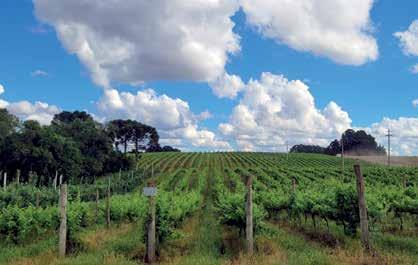
and invigorating acidity. The oak (12 months, French, second use) is seamlessly integrated. It can improve and keep in the bottle for five to six years. Reduto, their superpremium wine, is 100 per cent Merlot, multivintage, and made from dehydrated grapes. These are harvested very ripe and undergo 20–25 days of appassimento. This is a deeply coloured wine with intense aromas and flavours of raisined fruit, a sturdy structure of sinewy tannins, healthy acidity and high alcohol. It is a big, complex wine suitable for long cellaring.
Aracuri Brut (Chardonnay, long Charmat method) is fresh, fruity and elegant, with a touch of autolysis. The traditional method sparklers take advantage of the sound quality of Pinot Noir from Aracuri’s vineyards. Nature, Blanc de Noir (Pinot Noir), somewhat austere in the nose, grows up in the mouth, being rich, well structured, with some savouriness and clear autolytic character. Rosé Nature is also Pinot Noir (24month autolysis). It is a dark pink wine, rich in ripe red berries, so dry and exceedingly fresh. Sur Lie, undisgorged, again Pinot Noir, is savoury, with a saline touch, complex and concentrated and has great gastronomic versatility.
Vinícola Campestre (Zanotto) ��
Vacaria
www.vinicolacampestre.com.br
The brand Pérgola, owned by the Zanotto family, has been the sales leader in Brazil for nine consecutive years in the category of vinhos de
Aracuri vineyard
Suzin Sauvignon Blanc, aromatically discreet, is intense in the mouth, where citrus, peach, white guava and herbs are balanced by crisp acidity; it is textural and ripe. Suzin Rosé, a red blend, is pale, fresh, light and fruity. Alecrim Tinto, a Bordeaux blend, spends 12–18 months in oak; harmonious and well structured, it is a bargain. Pinot Noir is a light, fresh and fruity rendition of this lovely grape with moderate oakiness.
The following varietal wines spend 24 months in oak, having 14–15% abv. Cabernet Sauvignon is dark, ripe, warm, minty and full bodied, with no hint of pyrazines. Merlot puts forward very ripe blackberry, chocolate and coffee, framing a full body and already amicable tannins with a long length. Malbec is again so ripe, full of plums, moderately tannic, powerful, chocolatey and dense. Rebo is riper still, with concentrated black fruit and a muscular structure, and is very long and satisfying. Cabernet Franc exhibits mint, pencil shavings and ripe cassis; its high, fluid acidity imparts elegance and associates with sturdy tannins, ensuring it will age well. Petit Verdot is dark and spicy, with a sinewy structure of tannins and acidity; it’s complex and ageworthy. Intrigante Lote III, a blend of five varieties, is once again a ripe, powerful, warm red, very tannic, demanding more bottle time to round off its edges. Montepulciano, with a huge 15.8% abv, uses new oak only (French and American); it’s superripe and full of blackberry fruit, chocolate, tobacco and balsamic notes. The high intensity, concentration and structure demonstrate how well Montepulciano performs at Serra Catarinense. Seu Zelindo (the patriarch’s name) Lote III is made from the same varieties as Intrigante, plus Cabernet Franc; dark, intense and strongly structured, with oak more evident, this is a wine to cellar.
Charmat Brut Rosé, made from Merlot and Malbec, offers fresh and ripe red fruit; it is simple and perfect for informal occasions.
Vinícola Thera ��
Bom Retiro, Serra Catarinense www.vinicolathera.com.br/
João Paulo de Freitas inherited this vast (800hectare) property from his father Dilor (who died in 2004), the creator of Villa Francioni. Indeed, Dilor’s pioneering vineyards were here, at Bom Retiro (about 100 kilometres north of São Joaquim). João christened the wine business after his mother Theresa’s nickname. He improved the vineyard, which now has 24 hectares, and created a complex for oenotourism, including a guesthouse (with a restaurant), wine bar and even a condominium.
Here, each owner can make their particular wines. A new, beautiful and wellfinished winery opened in 2024.
Viticulture and winemaking are directed with great competence by the experienced oenologist Átila Zavarize. The winery can process up to 300,000 litres of wine annually, but present production is 100,000 bottles. They intend to plant another 10 hectares, focusing on Italian varieties. Visitors are welcome to tour the vineyards and winery or to experience the wines at three wellfurbished tasting rooms (open Thursday to Sunday; booking required). The surroundings and buildings are all beautiful and functional.
Mr Freitas and Átila received me very well at Thera to taste some of their wines. Sauvignon Blanc is a good example of how the variety behaves in this cool region; instead of explosive tropical fruit, it brings a more discreet profile, with high freshness and a very good texture from eight to ten months with its fine lees. An older Sauvignon Blanc shows that these wines can gain complexity with mineral and petrol notes. Chardonnay is a very elegant rendition of the variety, its ripe fruit being well balanced by deft, moderate oakiness (20 per cent of the wine is fermented and matured in used French oak barrels). Again, a sixyearold wine demonstrates good ageing potential, being nutty, toasty and honeyed. A sample of their brandnew Semillon, not yet launched, had a
Átila Zavarize (left) and João Paulo de Freitas
Vinícola dos Montes ��
Santana dos Montes @vinhodosmontes
Santana dos Montes is a small town 140 kilometres south of Belo Horizonte. Here, you will find a tourist complex that includes Fazenda Guarará, a rural hotel, a brewery (Cerveja da Loba), cachaçamaking facilities and vineyards. The latter comprise 3.8 hectares, planted in 2007, at 720 metres, where Syrah is the main star. The vines are managed by DPWH. Mildew is the main viticultural problem here. The first wines appeared in 2011 and are made by Epamig, at Caldas (about 1,300 bottles a year). Visitors can enjoy the very comfortable hotel, with many leisure options, and taste the wine.
Syrah is deeply coloured, with very good varietal typicity: ripe blackberries, black pepper, savouriness and smoke.
Vinícola Pioli ��
Jacutinga vinicolapioli.com.br/
Jacutinga, a town in southern Minas Gerais, is better known for its knitwear industry. Pioli planted the vineyard and built their winery (where they have crafted wines since 2021). Today, 12 hectares are planted to Syrah and Sauvignon Blanc, the usual varieties in DPWH, but also
Vinícola Munira’s vineyard, Três Corações
lower land prices than in other wine regions, and the strong institutional support provided by federal and state governments. Importantly, manpower is also less expensive.
According to Alvares and collaborators, who developed a detailed map of Köppen climates for Brazil, the region is classified as Bsh – that is, semiarid, with low latitude and low altitude. Using the MCC system, on the other hand, results in intraannual variability, meaning that the climate class varies through the year. The variable index, however, is only DI, which can be 1 (subhumid), +1 (moderately dry) or +2 (very dry). The other indexes are constant: HI+3 (very warm or hot) and CI2 (warm nights).
Weather hazards are practically unknown: no frost, no hailstorms; as all viticulture is irrigated, drought is also not an issue. Powdery mildew can be a problem during the drier months, whereas rain may bring downy mildew and cluster rots. Grape moth has become a problem, however.
Tropical viticulture reigns here (see the Viticulture chapter, page 42, for more on this). It is, however, essential to remember that this allows more than one harvest per year, that the growth cycles can be adjusted to the climate type at each time of year, and that an almost uninterrupted supply of grapes can be thus obtained. The viticulturist may, for example, plan for a harvest during a cooler or drier month, thus
Large vineyards on flat terrain at Miolo’s Terranova
influencing the wine’s style. This is unique. Many vineyards are trained in a pergola system to protect the clusters from the abundant sunlight. Vertical shoot positioning (VSP) systems, here called espaldeiras, are also common. They demand specialized care. For example, the side that is more exposed to sunlight is seldom deleafed, thus protecting the fruit.
According to Embrapa, about 500 hectares of grapes were planted in 2017 to craft vinhos finos. Table grapes and those for vinhos de mesa are not included in this amount, and their planted area is far greater. Chenin Blanc and the Muscat group are the most predominant white grapes; they are important for making sparkling wines. Arinto, Sauvignon Blanc, Verdejo, Viognier and other varieties are also planted. Sweet, lowalcohol, Astilike sparkling wines make up a large percentage, and their base wines often include the Itália variety (see page 60). Sparklers constitute the majority of production here (over 60 per cent). Still white wines are made in minute amounts (1–2 per cent) and the balance is red. The reds are crafted largely from varieties better adapted to the particular conditions of the region: Syrah, Tempranillo, Touriga Nacional, Alicante Bouschet and Cabernet Sauvignon. Many other red varieties, however, are planted; some are already used commercially, while others are under trial, such as Barbera, Grenache, Malbec, Mourvèdre and Petite Sirah.
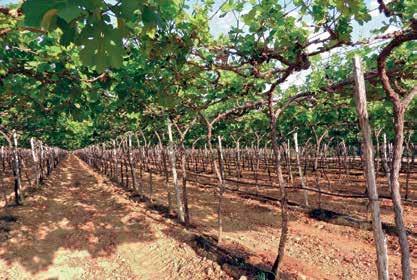
system and drip-irrigation lines at Rio Sol
Pergola
More from The Classic Wine Library
The Classic Wine Library is a premium source of information for students of wine, sommeliers and others who work in the wine industry, but can easily be enjoyed by anybody with an enthusiasm for wine. All authors are expert in their subject, with years of experience in the wine industry, and many are Masters of Wine. The series is curated by an editorial board made up of Sarah Jane Evans MW, Richard Mayson and James Tidwell MS. Continue expanding your knowledge with the titles below.
The wines of Portugal
The wines of Portugal provides detailed descriptions of the demarcated wine regions, the growers and the wines they produce. From crisp Vinhos Verdes in the Atlantic northwest through the Douro, Dão and Lisbon to the big, bold reds of the Alentejo and newcomers from the Algarve, this book is an uptodate appraisal of Portugal’s vineyards and wine producers.
The wines of California
A concise, complete, smartly delivered and cohesive book that considers wine through the lens of social history. The book takes readers on a journey through the Golden State’s wines, introducing the people who make them, and paying due attention to famous wine destinations such as Sonoma and Napa as well as exploring exciting lesserknown regions.
The wines of Australia
In The wines of Australia, sommelier Mark Davidson tastes his way round the new Australian wine world. He delves into the country’s history, culture, growing environment and grape varieties before exploring the wine regions, with key producers introduced and their wines assessed. The wines of Australia captures the character of one of the most exciting wineproducing countries on the planet.
Browse the full list and buy online at academieduvinlibrary.com
